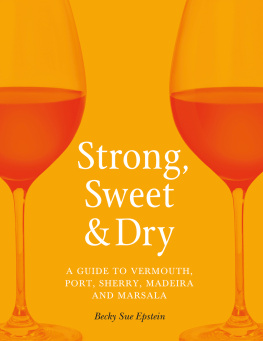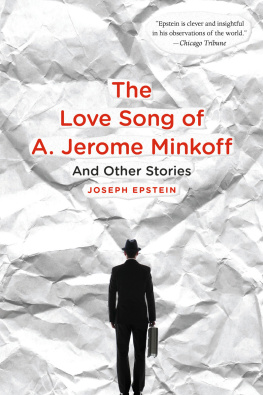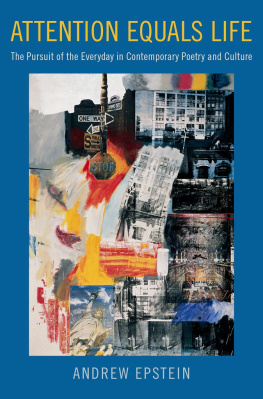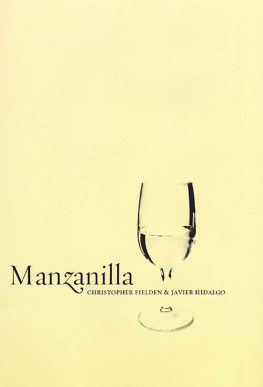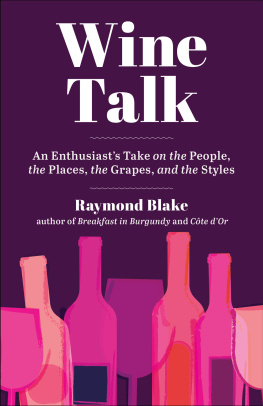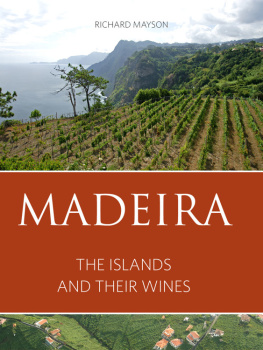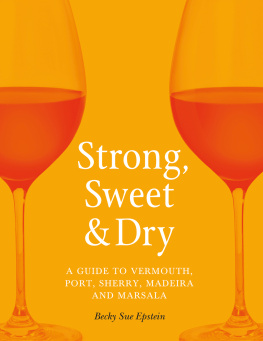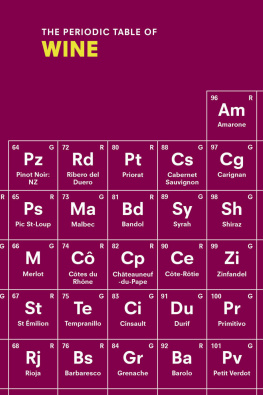Strong, Sweet and Dry

Strong,
Sweet
& Dry
A GUIDE TO VERMOUTH,
PORT, SHERRY, MADEIRA
AND MARSALA
Becky Sue Epstein
REAKTION BOOKS
Published by Reaktion Books Ltd
Unit 32, Waterside
4448 Wharf Road
London N1 7UX, UK
www.reaktionbooks.co.uk
First published 2020
Copyright Becky Sue Epstein 2020
All rights reserved
No part of this publication may be reproduced, stored in a retrieval system, or transmitted, in any form or by any means, electronic, mechanical, photocopying, recording or otherwise, without the prior permission of the publishers
Page references in the Photo Acknowledgements and
Index match the printed edition of this book.
Printed and bound in Malta by Gutenberg Press Ltd
A catalogue record for this book is available from the British Library
eISBN: 978 1 78914 186 3
Contents



We appreciate fortified wines more and more as our palates mature, according to recent groundbreaking research by Dr Liz Thach at Sonoma State University in California.
Introduction

Rich wines, generous wines, strong wines. Who wouldnt be drawn to wines with these charismatic names? High-spirited wines that have been relished for centuries, in a variety of countries: these are fortified wines. According to the latest research, the appreciation of fortified wines represents the ultimate evolution of the wine-drinkers palate.
Vermouth, port, sherry, Madeira, Marsala, vin doux naturel. The six major wines discussed in this book have been chosen for their enjoyability as well as their significance in the narrative of wine history. They are all European in origin, made with traditional wine grapes fermented into wine, then fortified and aged. Fortified simply means that pure spirit (usually a clear, unaged grape brandy) is added to the wine while it ferments, stopping the fermentation at a particular time. The result is wine with an alcohol level that is a little higher than table wine, which is appealing not only in taste, but in the wines ability to age for decades, even centuries.
Fortified wines display enticing flavours and fragrances. They possess multifaceted histories that connect science, discovery, trade and commerce in the modern world. Today, fortified wines stand at the intriguing intersection of wine, spirits and cocktails. Everywhere, there are new cocktails being fashioned with rare and wonderful spices, liqueurs, spirits and wines including fortified wines. In this lusty re-flowering of mixed drinks, its as if fortified wines have woken up from a long, arid winter. Suddenly, the dry leaves have been cleared away; bright streams have appeared and have instantly been gathered for consumption in cocktails, as aperitif wines and even for dessert. But where did they come from?
This book tells the stories of the worlds most significant fortified wines from their early histories, through centuries of conflicts, tempests and victories, to the present day. The fortified wines discussed here have been fashioned with care by winemakers following paths of excellence that have been demonstrated by many generations of wine producers. They are all made from traditional wine grapes (Vitis vinifera) that have been fermented into wine, then fortified and aged. After a season of growth in the vineyard, harvest and vinification, the wines have been fortified with pure grape spirit at precise moments in their development.
Ultimately, fortified wines are the enthralling result of months and years of evolving to perfection in barrels and in bottles, some in bright sunlight, others in cool, airy wine warehouses, still more in the sultry darkness of underground wine cellars. Many of these wines have experienced decades of extreme ageing, ultimately evolving with extra dimensionality in their aromas, flavours and finishes. Their renown has transcended centuries, and the wines themselves have been welcomed by discerning drinkers everywhere.
Fortified wines are now being imbibed by aficionados, collectors and generations of upscale restaurant and bar patrons looking for fresh thrills in their glasses. Mixologists and wine directors are joyously rediscovering fortified wines and employing their spicy aromas and lively flavours to create a new era for wine lovers as well as cocktail and spirit lovers.
Sherry has already proven its worth in cocktails, and other fortified wines have followed. Port is having a renaissance, with bartenders returning to using it as a cocktail base, just as they did in the nineteenth century, before rum, vodka and gin were popular.
Well-known cocktail consultant Michael Lazar clarifies the process of putting together cocktails:
An immediate advantage of wine-based ingredients (such as vermouth and [other] fortified wines) is that they provide a measure of acidity that spirit-based ingredients cant. Plus they can also add elements found no place else: oxidative flavours that can really add depth to a drink. And finally, added in the form of dry/blanc vermouths or sercial madeira, they can help offset sugars coming from other ingredients without adding a lot of flavour on their own.
Vermouth is one of his favourite ingredients, Lazar says. Its the acidity in vermouths complemented by all the other flavours they provide, that makes them such welcome additions to spirit driven cocktails, or really any cocktail in which we use them.
Eminent bar educator Andy Seymour explains, Cocktails get people to places they wouldnt normally get to laughable in the 1990s but normal now. Seymour uses one particular fortified wine as an illustration: Theres a very traditional place for port and that should never go away. But dont be so reverential that we cant enjoy port in a different way: cocktails. [For example] a lot of bartenders are trying out Manhattan style cocktails with tawny port [as a base].
In restaurants, for both wine directors and their customers, fortified wines are a new direction that entices explorers who are interested as much in novelty as they are in re-creating retro experiences.
Fortified wines have their greatest successes in food pairings when they are suggested by staff or on a menu. They are still a very small part of the total wine sales of any establishment, but they are growing every day, in the U.S., the UK and in forward-thinking bars and restaurants around the globe.
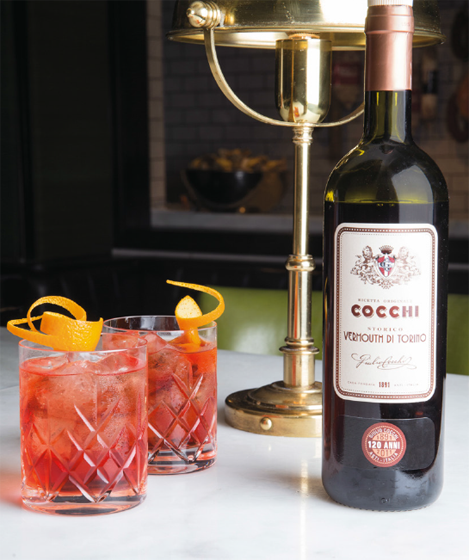
Simple and refreshing: Cocchi Vermouth di Torino poured over ice, garnished with orange zest.
1
Vermouth

Most people who drink cocktails have sampled vermouth, often without being aware of it, and usually without even knowing what vermouth is. Vermouth can be red or white, sweet or dry. Announcing itself with fragrances of spices and herbs, vermouth is known for its exotic and pleasing aromas, and its interplay of bitter and sweet components on the palate.

